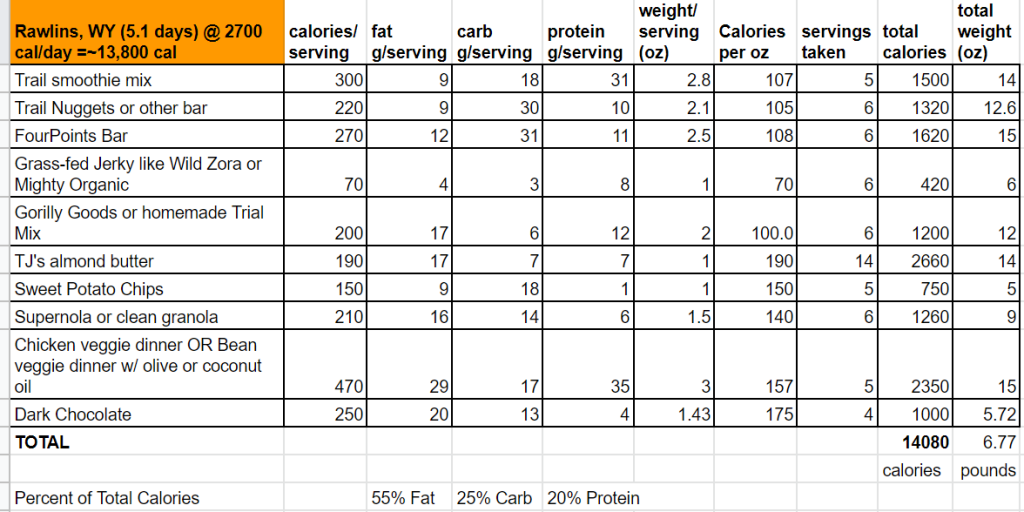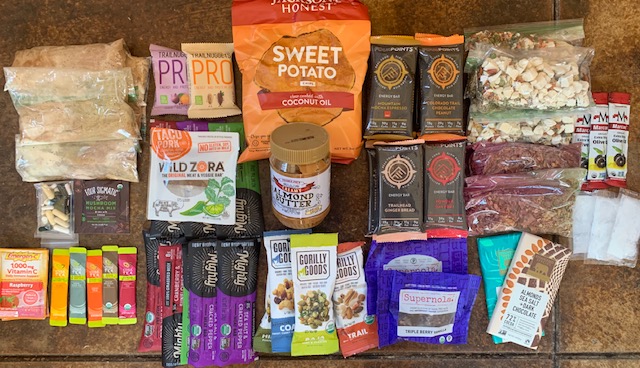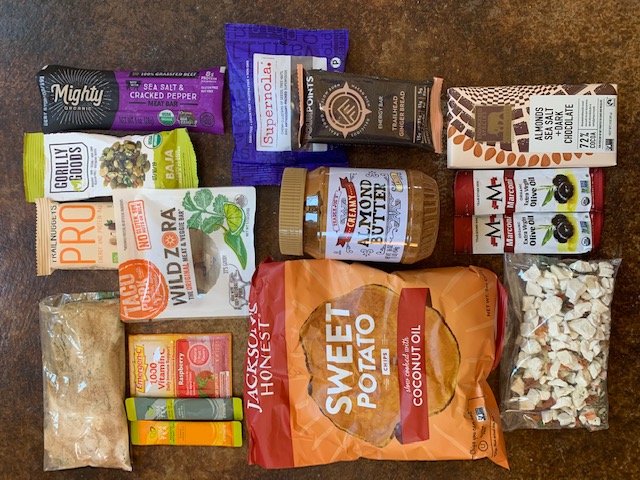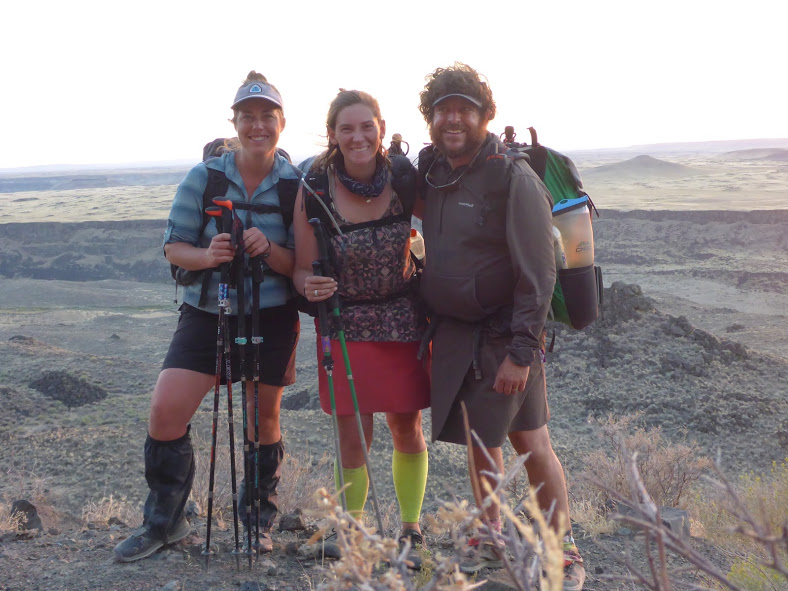Here’s a full 5-day healthy lightweight backpacking meal plan.
You’ll notice that each day of this meal plan is about 55% fat, 20% protein, and 25% carbohydrate. It’s based around whole foods, it’s anti-inflammatory and it’s suitable for stoveless meal prep (optional).
This healthy high fat approach helps me reduce pack weight, eliminate bonking, reduce hiker hunger, and decrease digestive issues. If you’re curious about the science and rationale of how I landed on this approach after years of experimentation, check out this post.
You’ll notice that this diet is a bit different than the standard, processed thru-hiker diet. It’s not perfect, but in general, this meal plan is designed to:
- be low in inflammatory ingredients
- be largely unprocessed & emphasize food quality (Because your food choices should be about more than just calories and here’s why)
- be organic/free-range/grass-fed when possible (so I can avoid the damage of glyphosate on both my body and the environment)
- emphasize nutrient density
The following meal plan was pulled straight from my spreadsheet for my Continental Divide Trail resupply plan. As such, it’s based on my calorie needs and food preferences. Dial in how much food is right for you and get a step by step guide to meal planning in this course.
The 5 days shown here is a box I’m sending around mile 1200, so it’s based on ~2700 calories per day. The total weight for this 5 days of food is 6.77 pounds or about 1.35 pounds of food per day. This is significantly lower than the commonly recommended 2 pounds per day.
I hope this gives you some ideas for your own backpacking meal if you’re looking for something a bit less junk food-y. It’s somewhat repetitive, but I appreciate the simplicity of that. It makes shopping in bulk easier and I can add variety by rotating through different varieties/flavors. For example, with a trail mix, it might be almonds, coconut flakes, dried cranberries, and ginger powder in one box, then walnut, cacao nibs, banana chips, and cinnamon in the next box.
The chart represents all the food for 5 days and the photos show what each day would look like. Post your Q’s or comments below.





Absolutely great information. The process of using the BMI and BMR calculators and finding what my Caloric needs are was helpful. I have made good progress towards healthy eating both at home and on the trail.
In two weeks I will be start a 450 mile section of the PCT and much of much of this will come into practice.
Regards,
Richard
Awesome! I’m so glad you found the information helpful and that you’ve been progressing towards healthier eating both at home and on trail! Happy trails 🙂
Do you really take a packet of Emergen-C daily?
Wouldn’t it make more sense to take 1/3 of a packet daily?
Why do you need so much vitamin C?
Thanks so much!
Yes, I drink at least one packet of emergen-c daily, especially on long hikes. Part of the reason is that it flavors my water and makes it more appealing to drink more. This is especially true on desert hikes, where you can only guzzle so much warm, cow-tasting water without needing a flavor enhancer. If I didn’t take emergen-c, I’d be buying a different electrolyte powder for that anyways.
From a health stand point, hiking 20+ miles a day is a stress on the body and stress depletes Vitamin C more rapidly, so I like to make sure my stores are topped off. So while I’m likely taking in more than I need, I’m okay with that knowing that my body just excretes the rest. I also like it for the immune support since I’m in slightly less sanitary conditions than at home. In addition to the vitamin C, emergen-c also has b-vitamin, electrolytes, and antioxidants, so I like those for energy as well. So, it works for me for those reasons, but I always encourage people to experiment and do what’s best for them.
Hy!
I’m sorry but I recounted the whole table and I get the percentage around 40/30/30 and I don’t know what am i missing.
I just double-checked and I believe the current calculations are correct. Add up the total grams for each macro, multiply by 9 cals/gram for fat, and 4 cals/gram for protein and carb, divide the result by total calories for the whole resupply and multiply by 100 for a percentage.